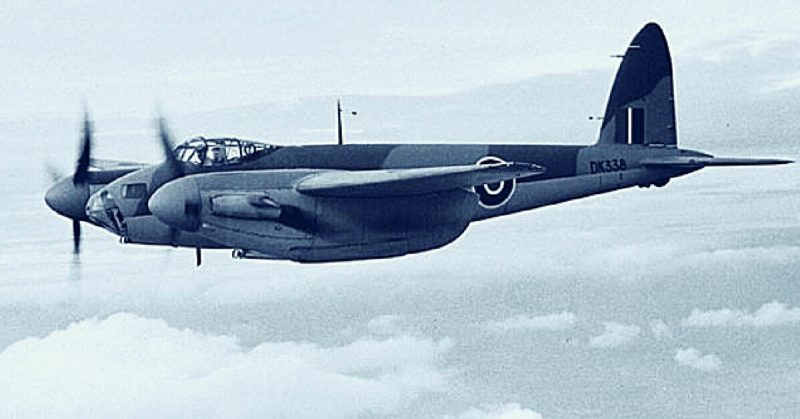The De Havilland Mosquito remains perhaps the most iconic British light bomber of the Second World War. Made almost entirely from wood, it was one of the fastest aircraft in the world at the time. The Mosquito was capable of a maximum speed of 668 kph (415 mph) ― an achievement that enabled it to perform daring raids during the war.
As well as being incredibly fast, the aircraft played so many roles within the RAF. It served as a medium-altitude daytime tactical bomber, high-altitude night bomber, pathfinder, day or night fighter, fighter-bomber, intruder, maritime strike aircraft, and fast photo-reconnaissance aircraft.
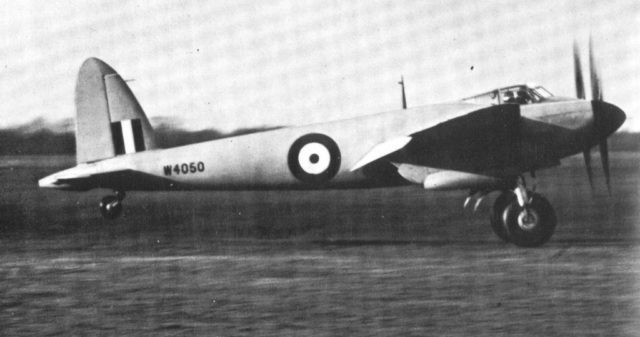
The wood design earned the Mosquito the nickname “Wooden Wonder,” or the more endearing “Mossie,” as it was usually called by its crew.
The story of the Mosquito began in the late 1930s. The De Havilland Company had established itself as a reliable and innovative aircraft manufacturer. Their successful designs of the high-speed DH.88 Comet Racer and the commercial airliner, DH.91 Albatross, were both inspiration for the Mosquito. The British Air Ministry asked De Havilland to produce a high-altitude twin-engine medium bomber capable of achieving incredible speed and carrying a bomb load of 3,000 pounds (1,400 kg) for 3,000 miles (4,800 km).
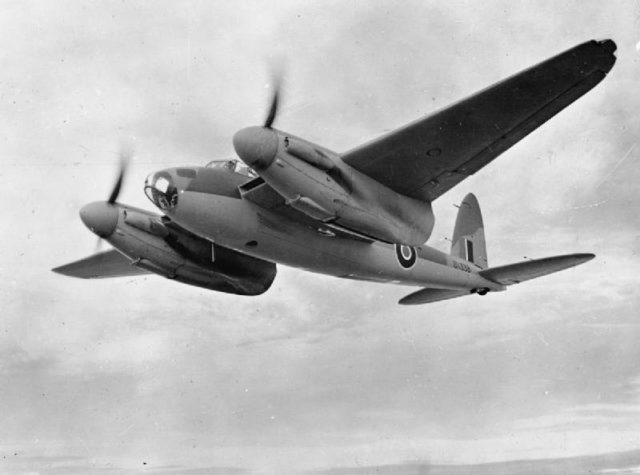
To meet the requirements, De Havilland initially planned to redesign the Albatross for combat use but instead produced an entirely new aircraft, which did possess traits of both prior designs.
The initial prototypes adopted the Merlin X engine, but it was suggested the aircraft adapt more powerful engines such as the Rolls-Royce Griffon and the Napier Sabre.
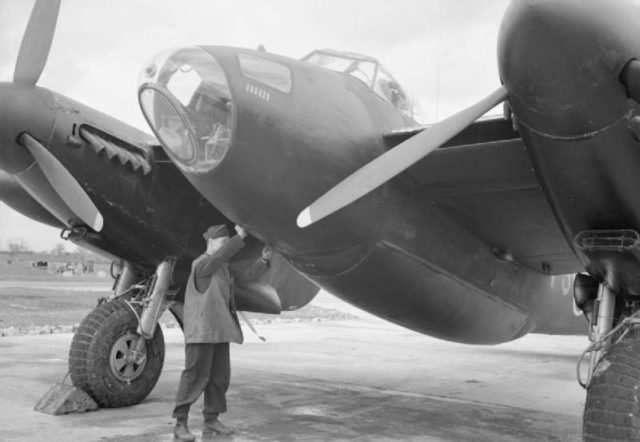
The Mosquito design originally concentrated on its velocity. The idea had been to build an almost unarmed aircraft. That idea proved to be a bit too risky for the Air Ministry, so a compromise was reached. The fighter-bomber variant was fitted with four 20 mm Hispano Mk.II cannon and four .303 (7.7 mm) Browning machine guns located in the nose of the aircraft.
The crew consisted of a pilot and navigator/bombardier duo. The Mosquito had its first flight on November 3, 1940. However, due to wartime conditions, modifications, and disagreements between the Air Ministry and the De Havilland company, the aircraft did not enter service until November 15, 1941.
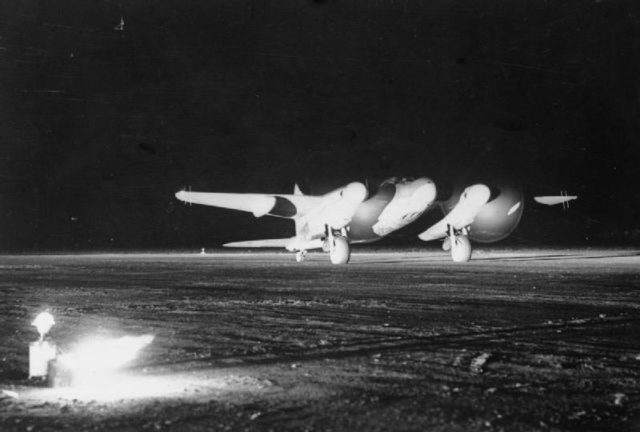
Apart from the fighter-bomber variant, there were ten more specially modified versions of the airplane. These included the night fighter; the day fighter; the reconnaissance aircraft fitted with F24 cameras; torpedo bombers; and a bomber fitted with the famous bouncing bombs.
Other variants were used for training or built under license by Allied countries such as Australia and Canada during and after WWII.
Throughout its operational history, the Mosquito was seen as a vanguard of the RAF. They were intended to serve as pathfinders for the heavy bombers, marking targets in the night, or going boldly where no other aircraft could go.
One of the most famous raids conducted by the De Havilland Mosquito was the Oslo Raid when a squadron bombed a Gestapo headquarters in occupied Norway’s capital.
Another, not so successful, was the Jericho Raid, which was the attempt to free resistance fighters imprisoned in the Amiens Prison in German-occupied France.
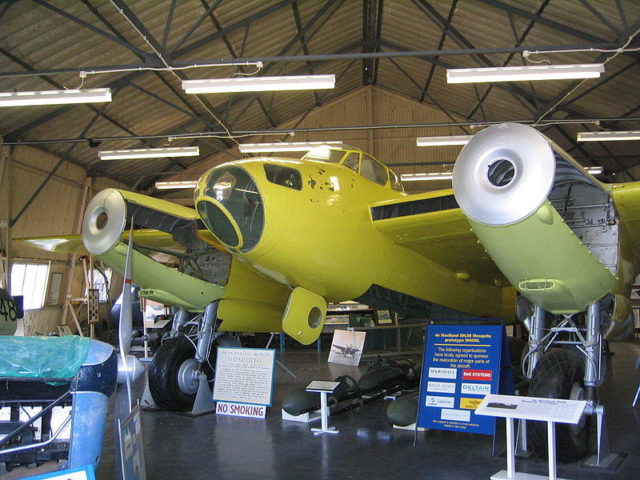
Today only three airworthy Mosquito aircraft and approximately 30 non-flying exist in the world.
The largest individual collection of Mosquitos belongs to the De Havilland Aircraft Heritage Centre in the United Kingdom which owns three units, none of them operational.
